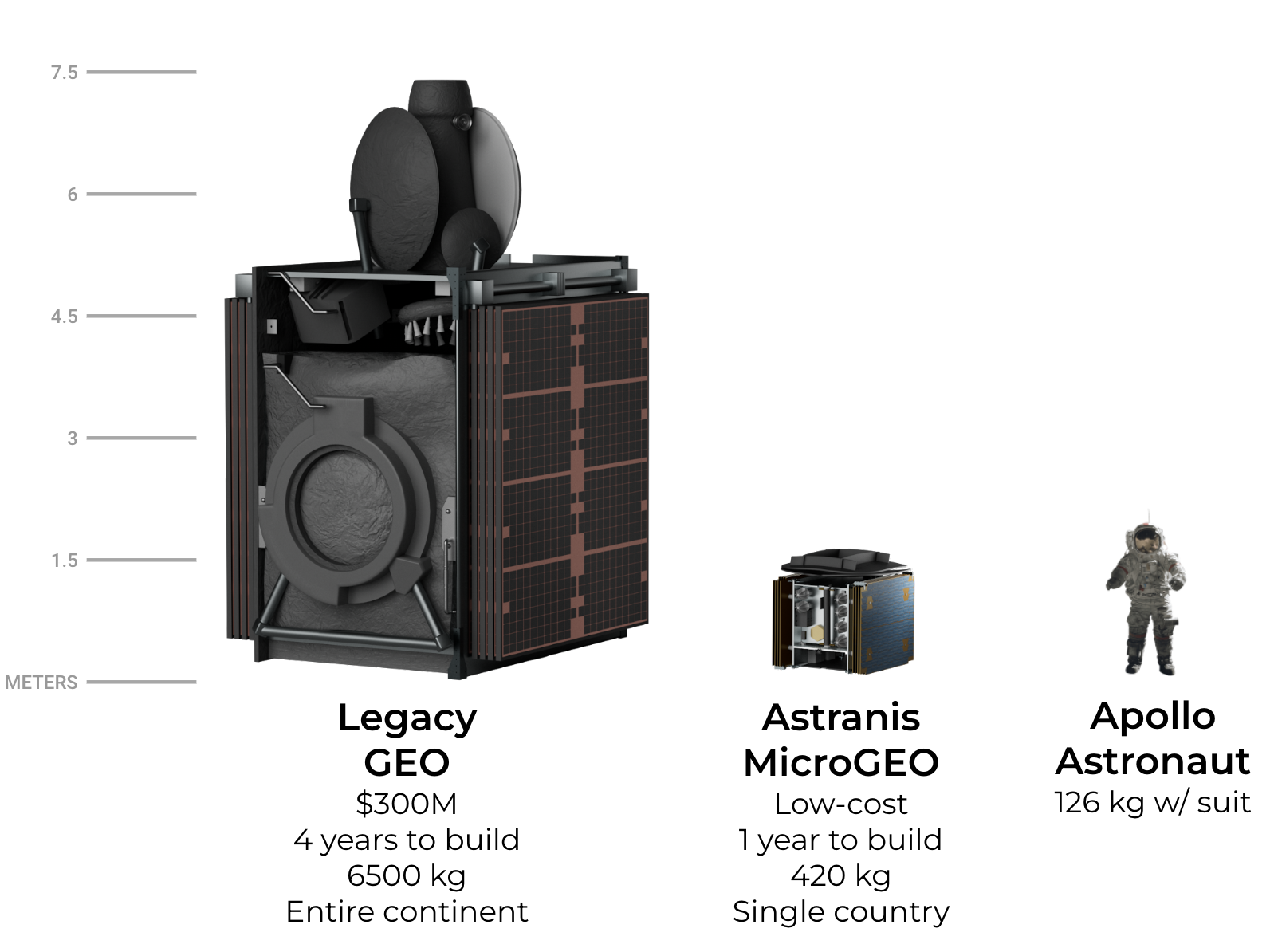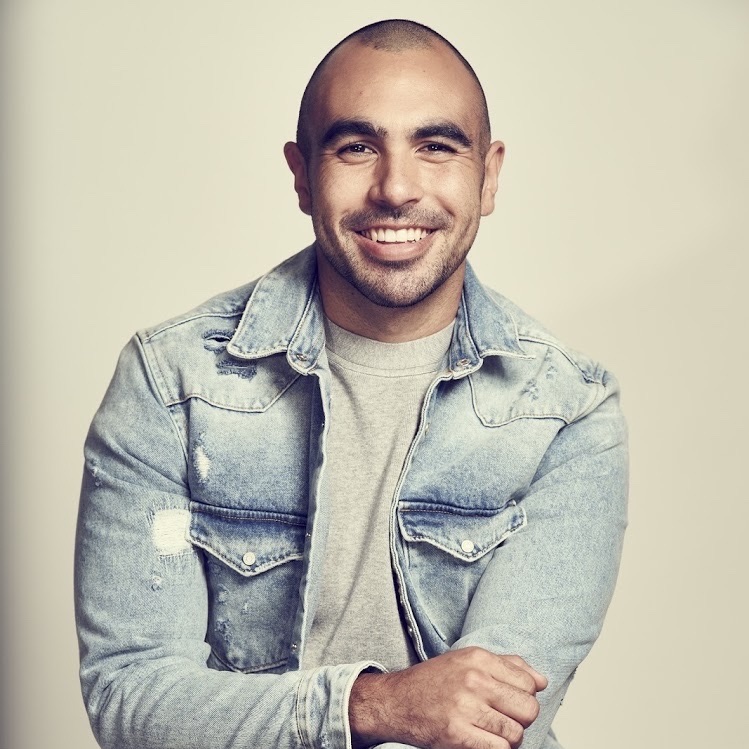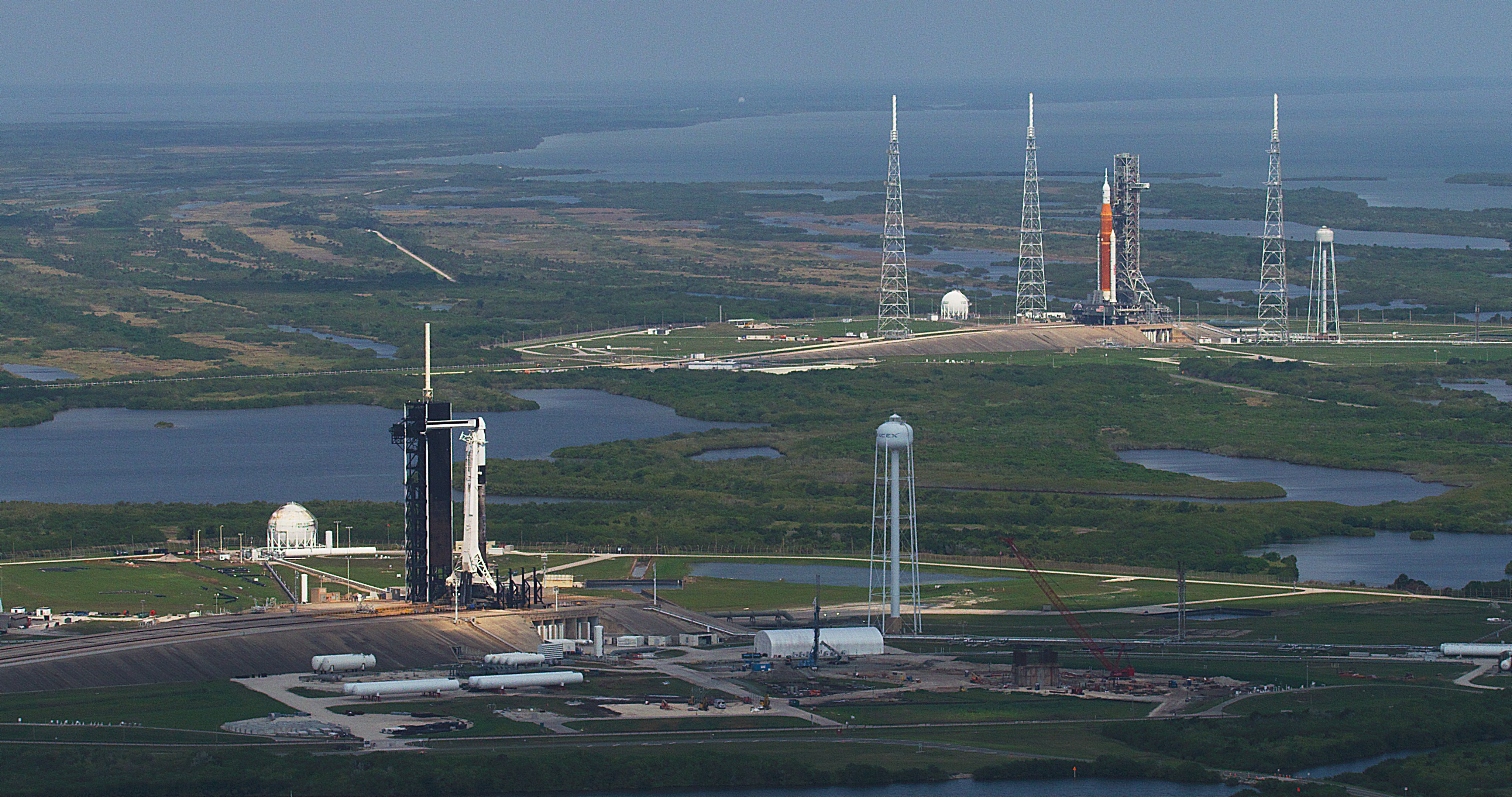Hello and welcome back to Max Q. It was a big week for private spaceflight. As usual, send feedback, comments and tips to aria.techcrunch@gmail.com. You also can catch me on Twitter at @breadfrom.
In this issue:
- Axiom Space’s first mission heads to the ISS
- Astranis purchases a dedicated Falcon 9 flight
- A week with founder and VC Jordan Noone
Don’t forget to sign up to get the free newsletter version of Max Q delivered to your inbox.
Axiom Space heads to the ISS in historic mission
Axiom Space’s inaugural fully private space mission is a go. The four-person crew took off from NASA’s Kennedy Space Center inside a SpaceX Crew Dragon atop a Falcon 9 rocket on Friday, where they headed to the International Space Station for an eight-day stint.
This is the first of many planned missions for Axiom, which aims to send its next batch of private citizens to the ISS in 2023. Axiom is not only in the business of private spaceflight — the company was also tapped by NASA to install commercial modules on the ISS, with the first module going up in late 2024. The company’s eventual aim is to separate the modules and operate them as a new station upon the ISS’ retirement at the end of the decade.
Rewatch the mission here:
Astranis contracted an entire Falcon 9 for a mission next summer
San Francisco-based startup Astranis has purchased a dedicated launch on a SpaceX Falcon 9 rocket. That’s right: Instead of using a “rideshare” model, where multiple companies split the cost of launch, Astranis has booked out the entire rocket, in an exclusive mission that the company says will put its package of four communications satellites closer to their target orbit in a much faster amount of time.
“We’re actually using substantially less than the max capability of a Falcon 9,” Astranis CEO and founder John Gedmark explained. “This is just four small satellites that [will be] on there. So we’re actually able to use all of that extra performance to put those four satellites much closer to GEO than you would normally be able to do with this kind of launch.”
Astranis manufactures MicroGEO satellites, so named because they are much smaller and lighter than the typical geostationary communications satellites that are in orbit today, coming in at around 1/20th the size and cost. The four satellites that will launch next summer already have dedicated customers, including Latin American telco company Grupo Andesat and Anuvu, which provides internet connectivity on airplanes and cruises.

Image Credits: Astranis (opens in a new window)
This week with…Jordan Noone
Jordan Noone is co-founder and founding CTO of Relativity Space, and also co-founded both Embedded Ventures and KittyCAD. Before that, he led University of Southern California’s Rocket Propulsion Laboratory for two years, overseeing the development and launch of the first two entirely student-built rockets with capability of reaching the altitude of space, over 100km high. Those flights resulted in him becoming the first student, and youngest person in the world, to get FAA clearance to fly a rocket to space. From there, he worked on crewed spaceflight propulsion systems at both Blue Origin as an intern, and then SpaceX full-time, before starting Relativity in 2015 when he was 22 years old.

Image Credits: Embedded Ventures (opens in a new window)
TechCrunch: What are you working on?
Jordan Noone: My time is split between Embedded Ventures, the venture capital fund that Jenna Bryant and I founded together in 2020, and KittyCAD as CEO, which is a startup we spun out of the fund last year. Embedded invests in dual-use space startups beyond launch, riding the disruption wave of falling launch costs from the last two decades of commercial launcher development. KittyCAD brings code to hardware, providing code infrastructure for hardware design automation. They both branch out from my co-founding Relativity Space and as CTO for the first six years — Embedded: investing in the future applications of launch, next-generation additive manufacturing and next generation digital engineering tools for hardware design — and KittyCAD: solving the bottlenecks on the design floor of cutting-edge hardware companies, rather than what we solved through 3D printing on the factory floor at Relativity.
What’s something that happened in the news in the last week that you can’t stop thinking about?
My alma mater, USC, through a donation from the Embedded Ventures team, brought back Project Payload: a program in which middle school-aged girls experience what it’s like to have a career in science, technology, engineering and math (STEM) through the design of rockets, payloads and satellites, along with programming. These hands-on programs are instrumental in creating interest in STEM for individuals under-represented in those fields today. A portion of the donation from Embedded Ventures will be made in honor of Summer Medford, a 2019 Project Payload alumna, who passed shortly after graduation from the program. We first learned about the program when Relativity sent volunteers to support the project years ago, however after that year, the previous donor cut the support for the program.
What are you looking forward to next week?
I’ve been fortunate to be on the entrepreneurial journey that I’ve had. The only goal that has ever resonated with me is to make the opportunity for that journey easier and more accessible for the next generation. That’s why we started Embedded, to support founders and tech areas overlooked by the mainstream venture community. That’s why we support programs like Project Payload and our other education outreach work. KittyCAD provides the tools needed by innovators designing world-changing hardware, Relativity allows iteration and imagination to flow freely in some of the world’s most complex hardware projects. I look forward to next week, and all my weeks, because they are full of the work required to see that goal happen. I am surrounded by equally ambitious people and teams working towards either the same goal, or goals that I believe in seeing happen.
What song has been on repeat?
The beat from KittyCAD’s new website.
More news from TC and beyond
- Amazon’s Project Kuiper, its massive plan to build a high-speed internet satellite constellation, came closer to materializing when the retail giant signed major launch agreements with United Launch Alliance, Blue Origin and Arianespace. The three agreements could be worth up to 83 launches and billions of dollars.
- Astroscale will resume its orbital debris clean-up demonstration mission, despite four of the eight thrusters on the spacecraft being out of commission. The company paused the mission in January due to a number of technical issues, including the thrusters.
- NASA is developing two space-based methods for monitoring climate change: one provides global estimates of aboveground forest biomass and carbon stores, and the second uses satellite data to develop a method of monitoring underground water loss.
- Rocket Lab will attempt a mid-air capture of the Electron rocket for the first time during the company’s next mission, which is scheduled to launch during the second half of this month.
- SpaceX has hit another bump in the road to the first orbital test flight of its super-massive rocket Starship. The U.S. Army Corps of Engineers suspended the company’s application to expand the Starbase launch facility due to SpaceX’s failure to provide certain information, Bloomberg reported.
- SpinLaunch scored a NASA contract to test the company’s unique approach to sending payload to space. SpinLaunch is developing a system that uses a large, vacuum-sealed chamber and a hypersonic tether to spin a spacecraft at a high enough velocity to escape the atmosphere.
- Type One, a U.S.-based VC firm, is launching a $50 million fund for space and deep tech companies. The new fund will be based in the U.S. with an office in London.
“America’s multi-use spaceport”

Image Credits: NASA/Jamie Peer (opens in a new window)
My favorite photo of the week: A view of SpaceX’s Falcon 9 rocket next to NASA’s Space Launch System, the first time two different types of rockets made to carry humans have been on launch pads at Kennedy Space Center at the same time. The photo was tweeted out on KSC’s Twitter page.
Max Q is brought to you by me, Aria Alamalhodaei. If you enjoy reading Max Q, consider forwarding it to a friend.
